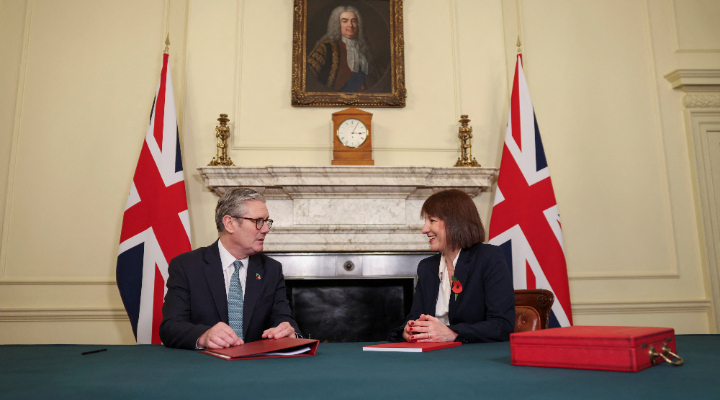To submit your own question or scenario for consideration as a future case study, please e-mail editorial@hemscott.co.uk. Feel free to respond to the advice given--or to offer your own advice--in the comments box below the article. You can also use our article archive to search for previous Case Studies.
Case Study
Kevin M., via e-mail
“Hi, I have a sum of money to invest which is currently spread across the following funds:
Virgin UK Index Tracking Trust Inc ISA 35%
Schroder European Acc ISA 6%
Schroder Pacific Acc ISA 3%
Schroder UK Smaller Companies Acc ISA 6%
M&G Recovery X Acc OEIC 10%
M&G Recovery X Inc ISA 16%
JPM UK Managed Equity A Acc ISA 13%
BlackRock Emerging Markets A Acc U/T 11%
I would like to be more aggressive overall but still hold some safeguards and steady growing funds. I have been thinking about diversifying the portfolio as follows:
Fidelity MoneyBuilder UK Index ISA 20%
M&G Recovery X Acc ISA 15%
JP Morgan Natural Resources A - Net Acc ISA 20%
BlackRock Emerging Markets A Acc ISA 15%
First State Greater China Growth A Acc ISA 10%
Allianz RCM BRIC Stars A Acc ISA 10%
BlackRock Gold and General A Acc ISA 5%
Invesco Perpetual Latin American ISA 5%
All advice appreciated.
Thanks, Kevin.”
Independent Response
Alexandre Riley DipPFS, Director, Medical & General Independent Financial Advisers
"Allocating investment funds to a portfolio is very much a task matched to the investor’s financial objectives, personal circumstances, risk tolerance and investment experience. Each investor has a different combination of these and, together with a multitude of investment theory and financial history to be understood, a definitive answer is well beyond the scope of this response. However, there are a number of basic guidelines that will help all investors build better portfolios and three appear immediately relevant.
"Choose an Asset Allocation: Never underestimate the benefits of a well thought out asset allocation plan. Choosing funds without a plan is the equivalent of building a house without an architect’s blueprint. When you take a step back and look at the end result you’ll see a mish mash of styles that although perfectly acceptable individually, do not add up to a pleasing whole. An asset allocation plan will define the right mix of stocks, bonds and cash in relation to your investment goals, time horizon and aversion to risk. For example, a pension fund for a 60 year old is likely to be skewed more toward lower risk investments for security reasons rather than a 30 year old who will probably want to make more use of stocks for growth. The respected economist and professional investor Benjamin Graham stated within his seminal book The Intelligent Investor that investors should consider allocating no more than 75% of their assets to stocks, or less than 25% to stocks, otherwise the balance between the risk and return would become unacceptably high or low. I consider that to be great guideline for all investors.
"Understand the Risks Involved: It is always important to realise that funds that make big short-term returns are also the same funds that tend to make big losses as well. You cannot achieve big returns without taking on a lot of risk and you must be prepared to accept that sizeable losses will occur from time to time. For example, the average Global Emerging Markets fund lost 36% in the 2008 calendar year but then gained 59% during 2009 (Source: Investment Managers Association) and as the warnings state, past performance is not a guide to the future. Your goal or objective may not allow you to wait for a recovery in prices and always remember that if you lose 50% of your original investment you must then gain 100% on that capital to get back to where you were! [Read this article for more on the cruel maths of investment losses.]
 "Pay Attention to Fund Costs: Initial charges and the ongoing Total Expense Ratio (TER) for each fund as well as any costs not included in the TER will reduce your initial investment capital as well as its future returns. In a basic example, a fund returning 8% per year will return 6% to the investor if the TER is 2% and return 7% to the investor if the TER is closer to 1%. Using this example, £10,000 invested for 20 years at a net return of 6% would accumulate to £32,071 and at a net return of 7% it would accumulate to £38,697. That equates to a result that's 20% higher just by managing the costs.
"Pay Attention to Fund Costs: Initial charges and the ongoing Total Expense Ratio (TER) for each fund as well as any costs not included in the TER will reduce your initial investment capital as well as its future returns. In a basic example, a fund returning 8% per year will return 6% to the investor if the TER is 2% and return 7% to the investor if the TER is closer to 1%. Using this example, £10,000 invested for 20 years at a net return of 6% would accumulate to £32,071 and at a net return of 7% it would accumulate to £38,697. That equates to a result that's 20% higher just by managing the costs.
"Taking these three key guidelines (and there are many others to consider) and applying them to the proposed portfolio, the following issues may require further analysis:
"1. The proposed asset allocation of 100% to stock funds offers no protection in a downturn. Alternative assets such as cash, bonds or even property could minimise risk, potentially improve returns and prevent rash decision making during a period of volatility. Make sure that the asset allocation is appropriate for the objective and time frame for the investment.
"2. With 65% of the proposed portfolio allocated to China, emerging markets and commodity stock funds, the proposed portfolio represents a risk to capital far in excess of anything that would generally be recommended as all of these funds are considered specialist or niche investments. This may be acceptable to you. However, significant losses, perhaps as much as 50% or more at any one time, must be tolerable.
"3. Specialist funds tend to cost more than ‘core’ investments. Other than the proposed index tracker, I wouldn’t be surprised if the remainder of the portfolio, which equates to 80% of your capital, is subject to annual costs of between 1.75% and 2.00% per year. That could cause a significant drag on performance if returns are more benign than expected.
"If in doubt, arrange to see a professional adviser with the relevant qualifications to advise on these matters because arranging and managing a portfolio of funds is no mean feat unless you have the time, experience or access to the necessary information on an ongoing basis."
Disclaimer: All views expressed in this article are those of the financial adviser and not necessarily those of Morningstar, Inc. Morningstar is not responsible for the financial adviser's comments nor will it be liable in any way for any advice or information provided by the financial adviser.
Do you own any of the funds that our reader, Kevin M., currently holds? Or those he is thinking of investing in? Share your experience and help out a fellow investor by using the commenting box below.
























